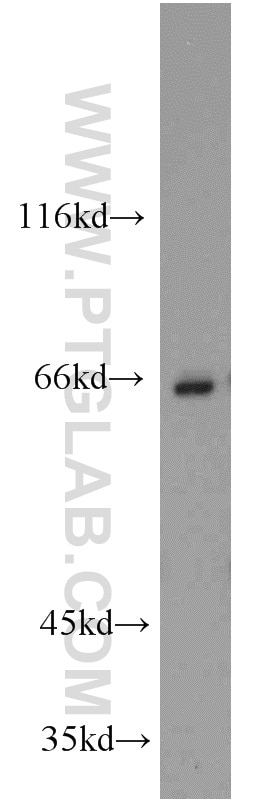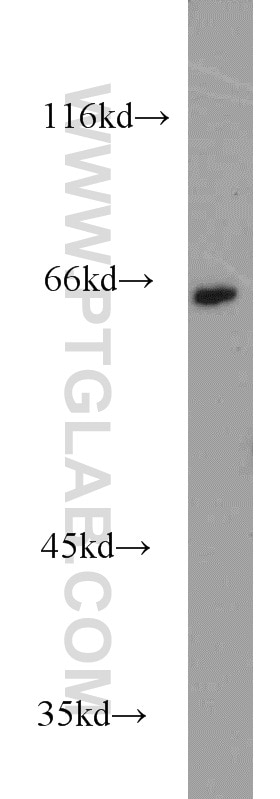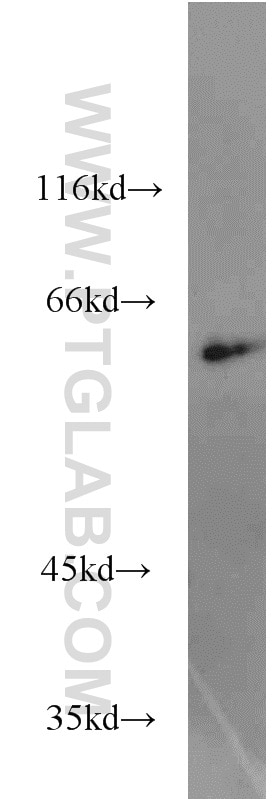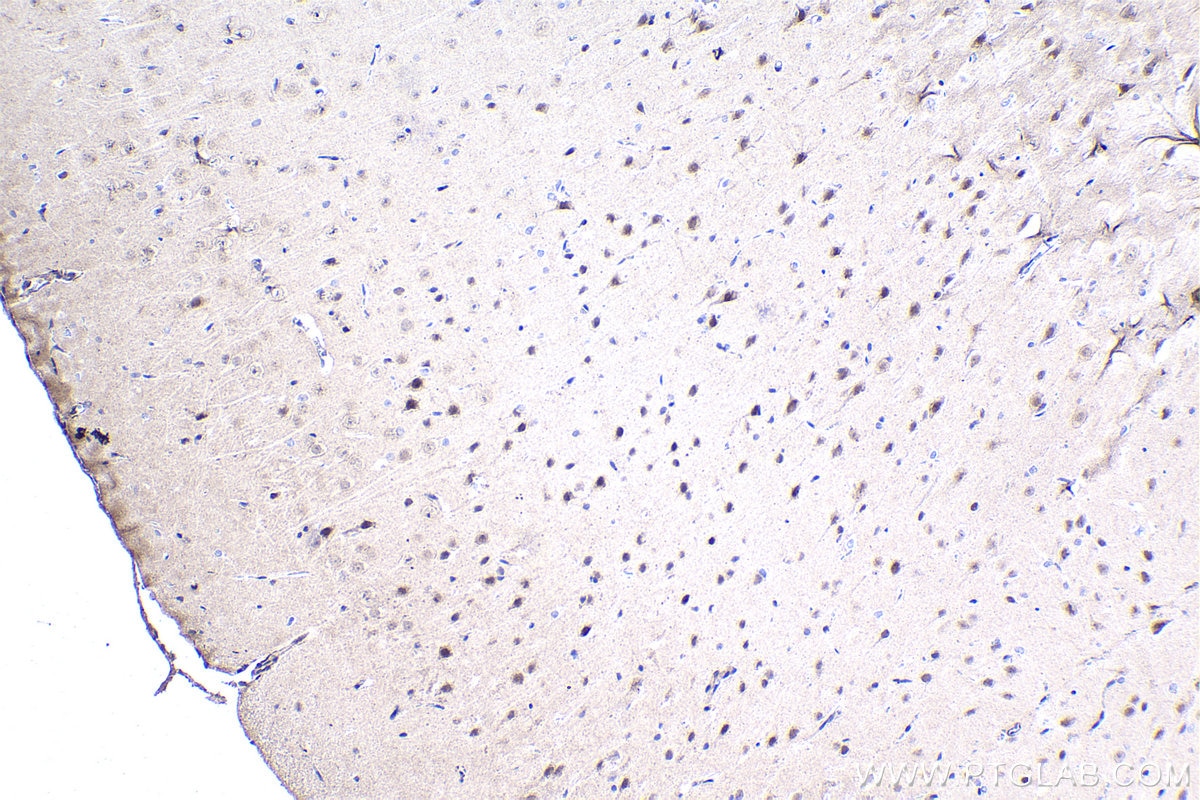Tested Applications
| Positive WB detected in | Jurkat cells |
| Positive IHC detected in | rat brain tissue Note: suggested antigen retrieval with TE buffer pH 9.0; (*) Alternatively, antigen retrieval may be performed with citrate buffer pH 6.0 |
Recommended dilution
| Application | Dilution |
|---|---|
| Western Blot (WB) | WB : 1:500-1:2000 |
| Immunohistochemistry (IHC) | IHC : 1:250-1:1000 |
| It is recommended that this reagent should be titrated in each testing system to obtain optimal results. | |
| Sample-dependent, Check data in validation data gallery. | |
Published Applications
| KD/KO | See 1 publications below |
| WB | See 3 publications below |
| IHC | See 2 publications below |
| IF | See 1 publications below |
| ChIP | See 1 publications below |
Product Information
17190-1-AP targets CBFA2T3 in WB, IHC, IF, ChIP, ELISA applications and shows reactivity with human, mouse, rat samples.
| Tested Reactivity | human, mouse, rat |
| Cited Reactivity | human, mouse |
| Host / Isotype | Rabbit / IgG |
| Class | Polyclonal |
| Type | Antibody |
| Immunogen |
CatNo: Ag9265 Product name: Recombinant human CBFA2T3 protein Source: e coli.-derived, PGEX-4T Tag: GST Domain: 267-615 aa of BC062624 Sequence: KRRTPDRTKENGSDRDPLHPQRYSPSNGPPQPTPPPHYRLEDIAMAHHFRDAYRHPDPRELRERHRPLVVPGSRQEEVIDHKLTEREWAEEWKHLNNLLNCIMDMVEKTRRSLTVLRRCQEADREELNHWARRYSDAEDTKKGPAPAAARPRSSSAGPEGPQLDVPREFLPRTLTGYVPEDIWRKAEEAVNEVKRQAMSELQKAVSDAERKAHELITTERAKMERALAEAKRQASEDALTVINQQEDSSESCWNCGRKASETCSGCNAARYCGSFCQHRDWEKHHHVCGQSLQGPTAVVADPVPGPPEAAHSLGPSLPVGAASPSEAGSAGPSRPGSPSPPGPLDTVPR Predict reactive species |
| Full Name | core-binding factor, runt domain, alpha subunit 2; translocated to, 3 |
| Calculated Molecular Weight | 71 kDa |
| Observed Molecular Weight | 62-65 kDa |
| GenBank Accession Number | BC062624 |
| Gene Symbol | CBFA2T3 |
| Gene ID (NCBI) | 863 |
| RRID | AB_10859097 |
| Conjugate | Unconjugated |
| Form | Liquid |
| Purification Method | Antigen affinity purification |
| UNIPROT ID | O75081 |
| Storage Buffer | PBS with 0.02% sodium azide and 50% glycerol, pH 7.3. |
| Storage Conditions | Store at -20°C. Stable for one year after shipment. Aliquoting is unnecessary for -20oC storage. 20ul sizes contain 0.1% BSA. |
Protocols
| Product Specific Protocols | |
|---|---|
| IHC protocol for CBFA2T3 antibody 17190-1-AP | Download protocol |
| WB protocol for CBFA2T3 antibody 17190-1-AP | Download protocol |
| Standard Protocols | |
|---|---|
| Click here to view our Standard Protocols |
Publications
| Species | Application | Title |
|---|---|---|
Oncotarget miR-27a and miR-27a* contribute to metastatic properties of osteosarcoma cells. | ||
J Biol Chem Transcription factor Zbtb1 interacts with bridging factor Lmo2 and maintains the T-lineage differentiation capacity of lymphoid progenitor cells | ||
Leukemia High caspase 3 and vulnerability to dual BCL2 family inhibition define ETO2::GLIS2 pediatric leukemia |










